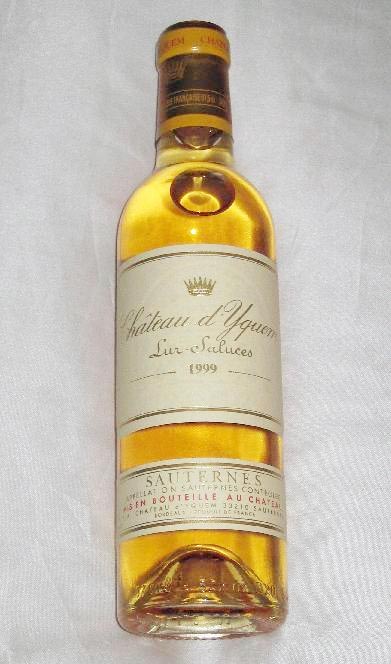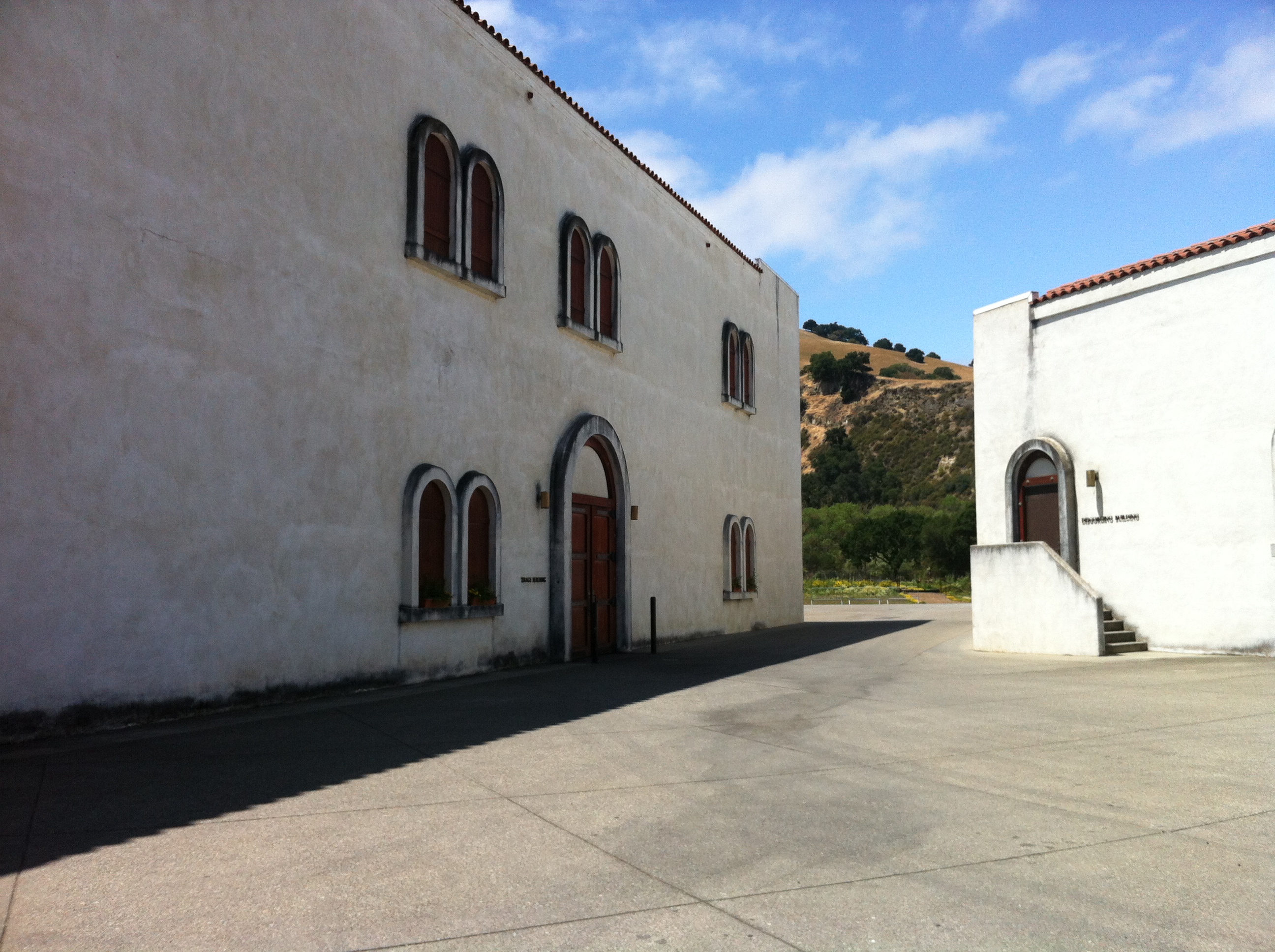|
Château Romer
Château Romer is a sweet white wine ranked as Second Cru Classé (French, “Second Growth”) in the original Bordeaux Wine Official Classification of 1855. Belonging to the Sauternes (wine), Sauternes Appellation d'origine contrôlée, appellation in Gironde, in the region of Graves (wine region), Graves, the estate is located in the commune of Fargues de Langon. History The wine estate was probably founded already in the 17th century by the Montalier family, and shares its early history with that of Château Romer du Hayot. In the year 1800, Ferdinand Auguste de Lur-Saluces married a descendant of the founders, Marie Thérèse Gabrielle de Montalier, which for a time made the estate part of the wine empire of the Lur-Saluces family. In 1824, their daughter Louise Alexandrine married Count Anne Auguste Jacques de la Myre-Mory. In 1855, the year of the classification of Bordeaux wine, the estate was named Château Romer, and was classified as a second growth. In 1881, due to inher ... [...More Info...] [...Related Items...] OR: [Wikipedia] [Google] [Baidu] |
Bordeaux Wine Official Classification Of 1855
The Bordeaux Wine Official Classification of 1855 resulted from the Exposition Universelle (1855), 1855 Exposition Universelle de Paris, when Emperor Napoleon III of France, Napoleon III requested a classification system for France's best Bordeaux wines that were to be on display for visitors from around the world. Brokers from the wine industry ranked the wines according to a château's reputation and trading price, which at that time was directly related to quality. The wines were ranked in importance from first growth, first to fifth growths (''cru (wine), crus''). All of the red wines that made it on the list came from the Médoc region except for one: Château Haut-Brion from Graves (wine region), Graves. The white wines, then of much less importance than red wine, were limited to the sweet varieties of Sauternes (wine), Sauternes and Barsac AOC, Barsac and were ranked only from superior first growth to second growth. Changes to the classification Within each category, th ... [...More Info...] [...Related Items...] OR: [Wikipedia] [Google] [Baidu] |
Sauternes (wine)
Sauternes () is a French sweet wine from the region of the same name in the Graves section in Bordeaux. Sauternes wine is made from Sémillon, sauvignon blanc, and muscadelle grapes that have been affected by ''Botrytis cinerea'', also known as noble rot. This causes the grapes to become partially raisined, resulting in concentrated and distinctively flavored wines. Due to its climate, Sauternes is one of the few wine regions where infection with noble rot is a frequent occurrence. Even so, production is a hit-or-miss proposition, with widely varying harvests from vintage to vintage. Wines from Sauternes, especially the ''Premier Cru Supérieur'' estate Château d'Yquem, can be very expensive, largely due to the very high cost of production. Barsac lies within Sauternes and is entitled to use either name. Somewhat similar but less expensive and typically less-distinguished wines are produced in the neighboring regions of Monbazillac, Cérons, Loupiac and Cadillac. I ... [...More Info...] [...Related Items...] OR: [Wikipedia] [Google] [Baidu] |
Appellation D'origine Contrôlée
In France, the ''appellation d'origine contrôlée'' (, ; abbr. AOC ) is a label that identifies an agricultural product whose stages of production and processing are carried out in a defined geographical area – the ''terroir'' – and using recognized and traditional know-how. The specificity of an AOC product is determined by the combination of a physical and biological environment with established production techniques transmitted within a human community. Together, these give the product its distinctive qualities. The defining technical and geographic factors are set forth in standards for each product, including wines, cheeses and meats. Other countries and the European Union have similar labeling systems. The European Union's protected designation of origin (PDO and PGI) system has harmonized the protection of all geographical indications and their registration. When labelling wine however, producers may still use recognized traditional terms like AOC, and are not requ ... [...More Info...] [...Related Items...] OR: [Wikipedia] [Google] [Baidu] |
Gironde
Gironde ( , US usually , ; , ) is the largest department in the southwestern French region of Nouvelle-Aquitaine. Named after the Gironde estuary, a major waterway, its prefecture is Bordeaux. In 2019, it had a population of 1,623,749.Populations légales 2019: 33 Gironde INSEE The famous Bordeaux wine region is in Gironde. It has six arrondissements, making it one of the departments with the most arrondissements ( [...More Info...] [...Related Items...] OR: [Wikipedia] [Google] [Baidu] |
Graves (wine Region)
Graves (, ''gravelly land'') is an important subregion of the Bordeaux wine region. Graves is situated on the left bank of the Garonne River, in the upstream part of the region, southeast of the city Bordeaux and stretches over . Graves is the only Bordeaux subregion famed for all three of Bordeaux's three main wine types (reds, dry whites and sweet wines) although red wines dominate the total production. Graves AOC is also the name of one ''Appellation d'origine contrôlée'' (AOC) that covers most but not all of the Graves subregion. The area encompasses villages including Sauternes, Pessac, Talence, Léognan, Martillac, Saint-Morillon, and Portets. The name "Graves" derives from its intensely gravelly soil.H. Johnson & J. Robinson ''The World Atlas of Wine'' pg 98 Mitchell Beazley Publishing 2005 The soil is the result of glaciers from the Ice Age, which also left white quartz deposits that can still be found in the soil of some of the top winemaking estates.K. MacNeil ' ... [...More Info...] [...Related Items...] OR: [Wikipedia] [Google] [Baidu] |
Fargues De Langon
Fargues (; ) is a commune in the Gironde department in Nouvelle-Aquitaine in southwestern France. Fargues is located in the Sauternes wine appellation of Bordeaux. Population See also *Communes of the Gironde department The following is a list of the 534 communes of the Gironde department of France. The communes cooperate in the following intercommunalities (as of 2025):Communes of Gironde {{LangonArrondissement-geo-stub ... [...More Info...] [...Related Items...] OR: [Wikipedia] [Google] [Baidu] |
Château Romer Du Hayot
Château Romer du Hayot is a sweet white wine ranked as Second Cru Classé (French, “Second Growth”) in the original Bordeaux Wine Official Classification of 1855. Belonging to the Sauternes appellation in Gironde, in the region of Graves, the winery is located in the commune of Sauternes. History The wine estate was probably founded already in the 17th century by the Montalier family, and shares its early history with that of Château Romer. In the year 1800, Ferdinand Auguste de Lur-Saluces married a descendant of the founders, Marie Thérèse Gabrielle de Montalier, which for a time made the estate part of the wine empire of the Lur-Saluces family. In 1824, their daughter Louise Alexandrine married Count Anne Auguste Jacques de la Myre-Mory. In 1855, the year of the classification of Bordeaux wine, the estate was named Château Romer, and was classified as a second growth. In 1881, due to inheritance, the estate was divided into several smaller lots that were passed dow ... [...More Info...] [...Related Items...] OR: [Wikipedia] [Google] [Baidu] |
Bernard Magrez
Bernard Magrez (born 1936) is a French wine magnate who predominantly owns Bordeaux wine estates, including Château La Tour Carnet, Château Pape Clément, Château Fombrauge and Clos Haut-Peyraguey but also a large number of wine producing properties in other French wine regions and other countries, including Spain, Portugal, Chile, Argentina, Japan, Morocco and California. In 2017 it was confirmed that Magrez had bought Château Le Sartre in Bordeaux's Pessac-Léognan. Biography A multi-millionaire, Magrez made his fortune as the founder of the William Pitters spirits company and the low-cost red Bordeaux brand Malesan and Sidi Brahim.''Bloomberg.com'' (August 8, 2005)Bordeaux Mogul Sells Cult Wines Under Global Brand: Elin McCoy/ref> In December 2008 it was reported that the investment bank Lazard was offering Château Latour for sale, and Magrez was suggested as the likely buyer. In the July 2009 ''Decanter A decanter is a vessel that is used to hold the decantatio ... [...More Info...] [...Related Items...] OR: [Wikipedia] [Google] [Baidu] |
Sémillon
Sémillon () is a golden-skinned grape used to make dry and sweet white wines, mostly in French wine, France and Australian wine, Australia. Its thin skin and susceptibility to Botrytis cinerea, botrytis make it dominate the sweet wine region Sauternes AOC and Barsac AOC. History The Sémillon grape is native to the Bordeaux wine region, Bordeaux region. It was known as Sémillon de Saint-Émilion in 1736, while Sémillon also resembles the Gascon language, local pronunciation of the town's name ([semi'ʎuŋ]). It first arrived in Australia in the early 19th century and by the 1820s the grape covered over 90% of South African wine, South Africa's vineyards, where it was known as ''Wyndruif'', meaning "wine grape". It was once considered to be the most planted grape in the world, although this is no longer the case. In the 1950s, Chile wine, Chile's vineyards were made up of over 75% Sémillon. Today, it accounts for just 1% of South Africa wine, South African Cape vines. Vitic ... [...More Info...] [...Related Items...] OR: [Wikipedia] [Google] [Baidu] |
Sauvignon Blanc
Sauvignon blanc () is a green-skinned grape variety that originates from the city of Bordeaux in France. The grape most likely gets its name from the French words ''sauvage'' ("wild") and ''blanc'' ("white") due to its early origins as an indigenous grape in South West France. It is possibly a descendant of Savagnin. Sauvignon blanc is planted in many of the world's wine regions, producing a crisp, dry, and refreshing white varietal wine. The grape is also a component of the famous dessert wines from Sauternes and Barsac. Sauvignon blanc is widely cultivated in France, Chile, Romania, Canada, Australia, New Zealand, South Africa, Bulgaria, the states of Oregon, Washington, and California in the US. Some New World Sauvignon blancs, particularly from California, may also be called "Fumé Blanc", a marketing term coined by Robert Mondavi in reference to Pouilly-Fumé. Depending on the climate, the flavor can range from aggressively grassy to sweetly tropical. In cooler cl ... [...More Info...] [...Related Items...] OR: [Wikipedia] [Google] [Baidu] |
Muscadelle
Muscadelle () is a white wine grape variety. It has a simple aroma of grape juice and raisins like grapes of the Muscat family of grapes, but it is unrelated. DNA analysis has indicated that Muscadelle is a cross between Gouais blanc and an unidentified grape variety. Wine regions In France, it is a minor constituent in the dry and sweet wines of Bordeaux, such as Sauternes. It rarely makes up more than 10% of the blend, which is dominated by Sémillon and Sauvignon blanc. Throughout the 1990s and the beginning of the 21st century, plantings of the grape were falling. Some sweet wines from Monbazillac, on the other hand, can have a higher proportion of Muscadelle. In Australia, the grape is used to make a fortified wine, now known as Topaque (formerly Tokay). Those made in the Rutherglen region generally receive considerable aging in hot cellars, leading to a maderised and oxidative character. A few other Australian wine regions, including the Barossa Valley, make similar ... [...More Info...] [...Related Items...] OR: [Wikipedia] [Google] [Baidu] |






